Opinion
Melito Glor, Whose Death Was Heavier Than A Mountain by Chibu Lagman '63
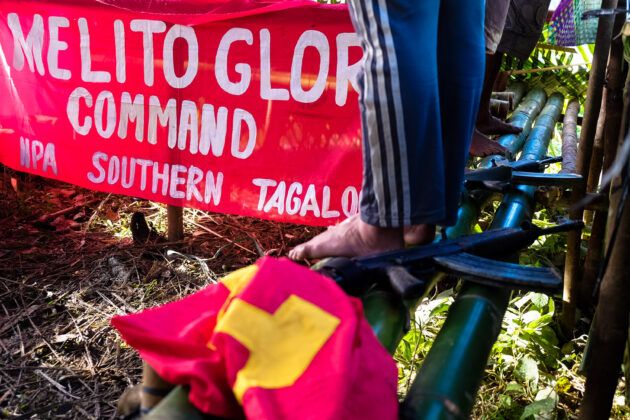
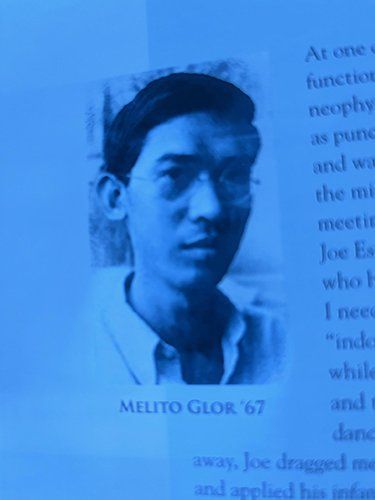
The best-known command of the communist New People's Army in Southern Tagalog is named after a member of reputedly the most "bourgeois" fraternity at the University of the Philippines. Huh? Yes, Melito Tierra Glor was a member of the Upsilon Sigma Phi. Ironically, his principal opponent, the president and later dictator Ferdinand E. Marcos was Glor's fraternity brother. Likewise, the best-known opponent of the dictatorship, Benigno "Ninoy" Aquino, Jr. was also an Upsilonian. In Mindanao, the NPA named another major command after Merardo Arce, another member of this "bourgeois" fraternity.
Much has been written about the public and private lives of Marcos and Aquino. But little is known about Glor other than he was a commander in the guerrilla army. Media often portray rebels as "grim and determined" fanatics, caricatures, much like the character Strelnikov, the Bolshevik revolutionary in Boris Pasternak's book "Dr. Zhivago." Was Glor, the same? Or did he have a different persona outside the movement?
Mel Glor was the only child of well-to-do parents. He was born and grew up in Atimonan, Quezon. His high school yearbook described him as "the campus James Dean." A former teacher claimed that Glor was "a thinker and was one of his best pupils." The same yearbook added that "he had polished manners, but he was bold and daring and he had an aura of danger and mystery..."
After high school, Glor enrolled in UP, hoping to complete a pre-med degree and later on to go to medical school. In his second year in college, the provinciano decided to apply for membership in the Upsilon Sigma Phi Fraternity. True or not, this Greek-lettered organization has always had a reputation of being for the well-to-do and the "sosyal." Apart from prominent politicians, it counts among its members, the millionaire businessman Jorge Araneta and the late couturier, Pitoy Moreno. Why did Glor choose to join this fraternity in particular? It would seem like a serious disconnect from his later persona.
After rigorous screening, interviews, and medical tests, Glor and some 30 others were accepted as neophytes. During the formal initiations, he quickly earned the reputation among his suffering brethren and frat masters of having malakas ang pamalasakit sa kapwa (a strong sense of empathy), a desirable trait. A less physically fit fellow neophyte recalls:
"I was late in applying but was accepted as a neophyte along with Mel and a few others. But even before the start of formal initiations and acceptance as neophytes, some of the other applicants had already felt the fists and feet of over-eager frat masters. The practice was that latecomers needed to be "equalized" by our masters, meaning catch up with the ordeals of proper "fraternal indoctrination." For myself, the catch-up happened during a cocktail party where neophytes served as waiters. At one point, a master called to me to corner and I was subjected to a series of acquainting blows including the contact of this master's bony knee against my thigh. After an unbearable 30 seconds of pain, I was ordered to get up and prepare myself for another contact with my master's bony knee. Suddenly, Mel's gentle voice floated to me and my torturer, "Ako na lang (let it be me), master!" he announced like a prayer. My cries of pain were overwhelmed by a sense of relief and an understanding of what it means to be saved. I suspect the pain inflicted on Mel was even more than the ones I received -- a reward for his sacrificial offer.”
Formal initiations in the Upsilon is a process somewhat similar to that experienced by recruits in the French Foreign Legion. Aspirants coming from different provinces, subscribing to different political and religious creeds, born to different social classes and with acceptable academic grades, are placed together in something like a pressure cooker. In that cauldron, they learn about the frat's history and practices while stewing in indignities and hematoma. It serves as a leveling device and is used simultaneously for the creation of a new and common identity: Upsilonian.
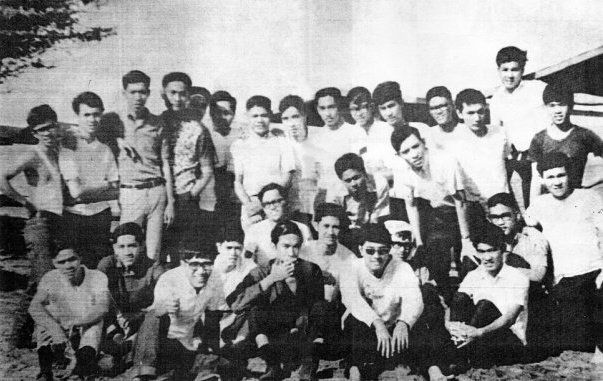
Mel Glor '67 (front row in black) with batch '69 of Upsilon the night before its final initiation. The batch calls itself the “original Melito Glor command.” (Photo courtesy of Delfin Cruz)
On the evening of Oct. 1, 1967, in rites resembling its Masonic origins, Mel and 31 others swore loyalty and service to their country, university, and fraternity. This was also the start of the transformation of the shy provinciano to a confident and proud member of an exclusive and prestigious Greek-lettered organization.
Mel's affable ways easily endeared him to his new brothers. He soon adopted their practices, like appending the number 67 after his name to indicate the year he joined (Mel T. Glor ' 67). He started wearing the same preppy clothes (button down shirts and penny loafer moccasins) favored by them. He spent a lot of time in their hangout at the UP Basement. In short, he became what they called "a regular fellow."
It was noticed that Mel shared similar facial features and choice of clothes with another brother who joined a couple of years earlier. His nickname was Koops. In recognition of the similarities, Mel was renamed "Spooks," a name he kept all throughout college and beyond.
His years in Diliman were spent much like any UP student, mostly in classes and socials. On the latter, his batch-mates noted another trait that surfaced and allowed them to mercilessly tease him. “Hindi marunong manligaw (he doesn’t know how to court a girl)!" There was still enough of a provinciano in him, which made courting coeds a difficult undertaking. He and his buddy, Tony Bayhon, shared the same handicap. Both could only talk about their love life, or lack of it, after a few beers or shots of gin while listening to syrupy love songs on the juke box, or Bob Dylan’s antiwar songs, which Tony liked to sing.
Another batch-mate remembers:
"Though Spooks couldn't sing to spit, he loved music. And when he was in that romantic stupor, fortified by beer or gin, he would lip-synch the latest tunes in front of Sampaguita dorm (a female-only dormitory on the Diliman campus) addressing his love intentions to some lass. We usually went along with his escapades (harana), providing solo or the musical accompaniment to his quixotic musings. You (couldn’t) help it; it was difficult to say no to him."
Despite its bourgeois reputation, the Upsilon Sigma Phi always had “left-wing" elements in its ranks. One of its founders, Agapito del Rosario, was also a founder of the Socialist Party of the Philippines. Spooks lived during "interesting times" and was a student in UP Diliman during the First Quarter Storm of 1970 and the Diliman Commune of 1971. Even though he was not in the social sciences, he read a lot and liked to discuss politics with the few radical elements in his fraternity. Some of the latter preceded him in the underground even before the declaration of Martial Law.
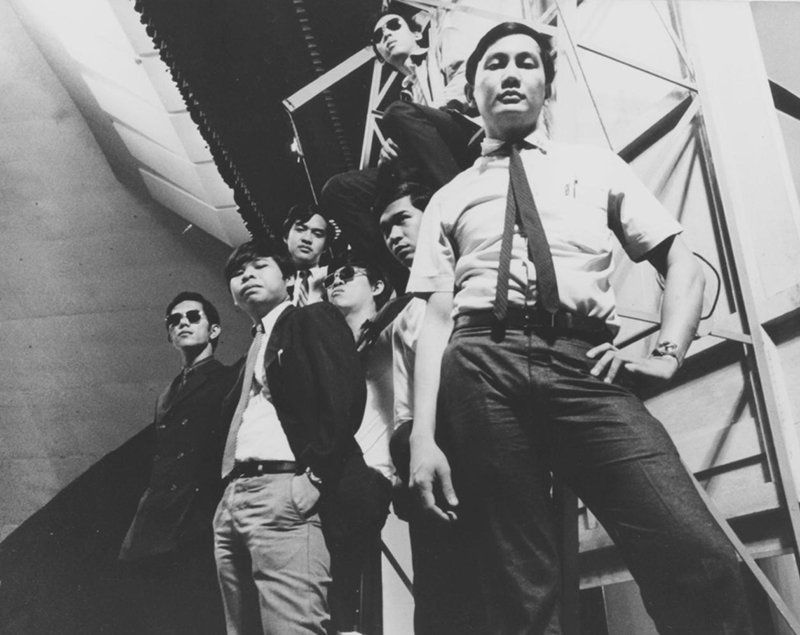
Behind the scene at an Upsilon event. Mel Glor is second from right. At the foreground on the right is Bobby Nuqui who later became a Philippine Air Force pilot and a general. (Photo courtesy of Benny Fulgencio)
No one knew for sure when Spooks joined the revolutionary movement. Some say it was after a summer back in Atimonan, where he witnessed extreme inequality and the growing repression of the rural population. But it became an open secret in his fraternity that Spooks had turned "left."
When Martial Law as declared in 1972, Spooks still frequented Diliman though no longer a student. By that time he was not just a full time activist but already a member of the New People's Army. His mission then was to collect logistical support for his guerrilla unit in Southern Tagalog.
An "everyman," he had the uncanny ability to blend into different environments. When in Manila in those days, he would stay with his more affluent brods who lived in gated communities. Who after all would look for guerrillas in San Lorenzo Village or BelAir?
The "bold and daring" high school yearbook description took on greater meaning during those difficult years. It included his wedding in Manila to a hometown lass. His church wedding was not unlike others and included a wedding reception complete with a wedding cake. All the abays (groomsmen) and the ninong (sponsor) belonged to his fraternity.
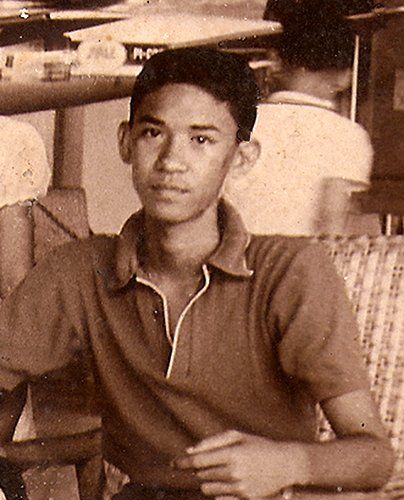
Mel Glor in high school was tagged "the campus James Dean."
But the meeting his brods remembers best was when Spooks and his drinking buddy, Tony Bayhon, met again during Martial Law. The two had not seen each other for a couple of years. Tony graduated from UP earlier, started working in boring jobs before finally following the footsteps of his father by joining the military. Another brod, Vicar Rosales, then the editor of a music magazine, was a batch-mate of Tony and close to both. He was curious to know if fraternal ties trumps opposing political persuasions.
Vicar knew about Spooks’ periodic visits to Manila to gather logistical support for his NPA unit. And he learned that his batch-mate Tony was scheduled for a furlough in Manila. He thought it a great opportunity to test out his suppositions by arranging a social gathering between the two former drinking buddies now separated by a political and military divide.
Vicar reserved the private room in Country Chef, a restaurant near the ABS-CBN studios. It was then a favorite watering hole of Upsilonians in Quezon City. Tony arrived with Vicar who immediately called another brod designated to bring Spooks to the gathering. There were other Upsilonians in the room, but no one knew how the "honorees" would react upon seeing each other. "Tense" would be a mild word for the room's atmosphere. Tony had a pistol tucked under his shirt and Spooks was always packing one in those days.

Mel Glor (second left) with some of his brother Upsilonians. (Photo courtesy of Benny Fulgencio)
When Spooks entered the reserved room, everyone froze. The first person the guerrilla commander saw was his drinking buddy, Lt. Bayhon. The rebel and the soldier approached each other and with tears in their eyes, the two enveloped each other in a fraternal embrace and stopped and looked at each other and hugged each other again.
Then Tony let on that he knew what Spooks had been doing with his comment, "Balita ko nagasawa ka daw. Marunong ka na palang manligaw (I heard that you got married. So you know how to woo a woman after all)." It broke the room's tense atmosphere and had everyone laughing. Beers were ordered and the drinking began. The two sat by each other confirming, that at least for this occasion, fraternal ties did trump political differences.
But that magic night had to end; there was a midnight curfew in place. There was time for a last toast and again the fraternal embrace and a last exchange of "Ingat (take care)!" Both disappeared into the night and that was the last time the two were ever seen again by their fraternity brothers. Tony Bayhon was killed in Mindanao in an encounter with bandits.
It was just like any other day of classes in UP sometime in October 1974. On the ground floor of the College of Arts and Sciences Basement, someone approached an Upsilonian and handed him a one-sentence note for the frat's leader and immediately disappeared. The note read, "Wala na si Tangkad (the tall one is gone)." The frat's leader immediately understood the cryptic message and ordered a member to post an announcement on their bulletin board.
Both the basement and the frat’s bulletin board were near one of the few entrances to the most populous college in UP. All students passing could read the announcement. On a white sheet of paper with a black band on the corner, a not uncommon announcement in UP those days read: Melito Tierra Glor '67, "A death heavier than a mountain!"
POSTSCRIPT:
Sometime in the second half of the 1970’s, a batchmate of Mel Glor visited Capalonga, a town near the Quezon-Bicol border. He wrote:
“Capalonga is a 5th class municipality that veers off from the highway going to Naga, We usually stop at a junction that leads to Capalonga after several hours of traveling from Manila. It serves as a rest stop before traveling two hours or more on an unpaved, rutted provincial road to Capalonga.
“I remembered that Mel was ambushed and killed in this area. His family was never informed by the Constabulary where his body was buried. As we were having a snack, I asked people in the restaurant if there was a cemetery nearby. The owner pointed to a person seated at another table whom he identified as the cemetery's caretaker. So I asked this person if he knew of a PC-NPA encounter in the area. He confirmed that there was such an encounter and that one of the guerrillas was killed. I asked further if he knew where the rebel fighter was buried. He again answered in the affirmative.
“I asked him to describe the features of the NPA rebel. His description sounded like that of Mel's. I asked him further if he could take me where the fighter was buried. After a short walk, he pointed to a narrow but long mound of earth, which appeared to be newly dug. When I returned to Manila, I informed brods of my suspicion that I may have found Mel's grave. From that point on, other brods took over the search and looked for connections who could help in the exhumation. Fortunately, we found a sympathetic ear in the person of the Second PC zone commander, Gen. Carlos Aguilar. Fortunately too, Carling Aguilar is also a brother Upsilonian. He approved our request for the unearthing of the mound. In front of his parents, Mel's remains and his clothes were identified. An immediate request for custody of his remains and clothes was immediately granted. The remains of Melito Tierra Glor '67 was reburied in Atimonan, his hometown. Apart from his family and friends, some of his Upsilon batch-mates were also present to pay their last tribute to a fallen brother.”
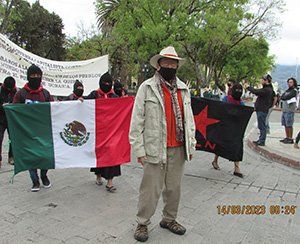
Chibu Lagman taught Latin American Studies at the University of Alberta and the University of the Philippines. He lives half of the year in the Philippines and the other half in Latin America. He is also a member of the Upsilon Sigma Phi like the sources for this article.
Reprinted with permission from Positively Filipino on-line magazine


